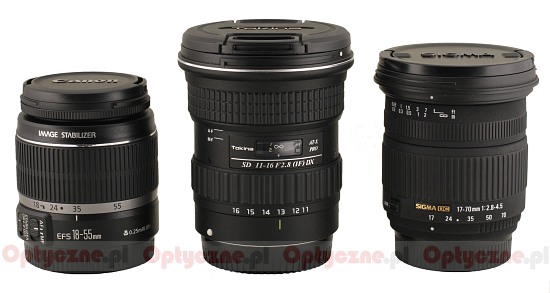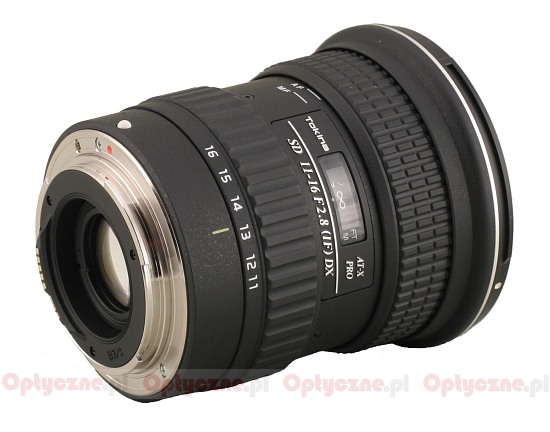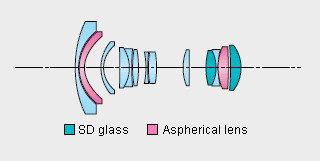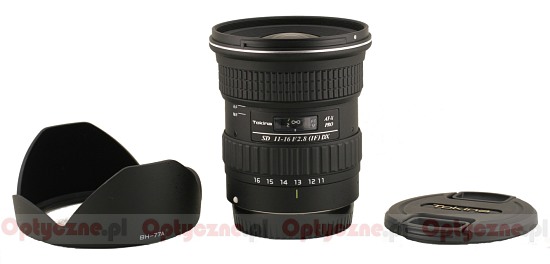Tokina AT-X 116 PRO DX AF 11-16 mm f/2.8
3. Build quality
 |
Tokina lenses are well known for the sturdiness of their outer shells. What is it like in case of the 11-16? It is difficult to say after a 2-3 weeks-long test, as the lens is supposed to last years of intensive use. There are, however, a couple of things we can’t fail to notice. The barrel is made of metal, heavy and it makes a good impression. First, the metal mount, next to which we find the zoom ring. It’s medium-sized, neither too wide, nor to thin. It moves fluently and with proper resistance throughout the whole range. Above it, we can see the distance scale, shown in meters and feet, placed under a little glass pane. Further along the lens is the focusing ring. The fluency and precision of its operation are beyond reproach.
Please Support UsIf you enjoy our reviews and articles, and you want us to continue our work please, support our website by donating through PayPal. The funds are going to be used for paying our editorial team, renting servers, and equipping our testing studio; only that way we will be able to continue providing you interesting content for free. |
- - - - - - - - - - - - - - - - - - - - - - - - - - - - - - - - - - - - - - - - - - - - - - - -
 |
There is just one ‘but’… The way we switch from AF to MF, Tokina’s proudly called One-touch Focus Clutch Mechanism, which I personally can’t stand. Switching from AF to MF mode is done by moving the whole ring towards the mount of the lens. Because of that, the ring rotates for no apparent reason (no Full Time Manual mechanism) in AF mode. Secondly, we have no chance to make little manual adjustments to what autofocus presents us with. Switching to MF mode cannot be done without a jerk of the ring, which causes a seemingly insignificant, but noticeable change on the scale of sharpness and thwarts all the work done by autofocus. All has to be done manually, all over again, from the very beginning.
It’s worth mentioning that the change of focus or focal length causes no change in overall dimensions of the lens. It lets us hope the instrument doesn’t suck dust inside the barrel. Additionally, it is friendly for filter users, as the 77 mm filter mount doesn’t move or rotate. However, we must point out that the leak-tightness is similar to this of EF-S Canon 10-22 mm or EF 17-40 L. The front element below the filter mount moves a bit along with the change of focal length, using an UV/protective filter can surely improve the tightness.
Inside Tokina 11-16 mm, we have to do with 13 elements set in 11 groups. Two lenses are made of low-dispersion SD glass and other two are aspheric. All this and the nine-bladed circular diaphragm, which can be stopped down to F/22 make the general picture of what we can find in this lens’ belly.

The lens comes with both caps and a petal-shaped hood.
 |






